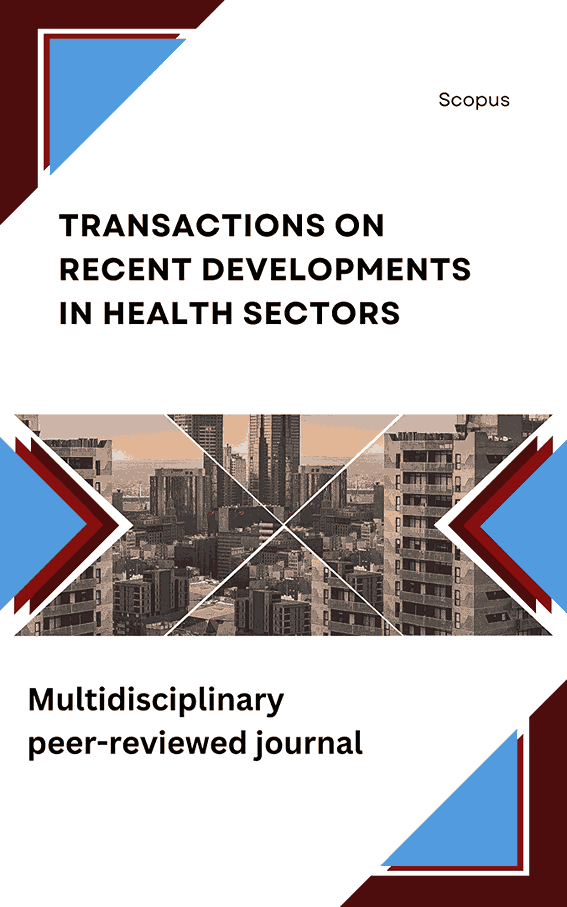Isometric Training and Its Effects on Muscle Strength and Endurance: A Review of Current Evidence
Abstract
Isometric training, which involves holding muscles in a static position against resistance, has gained popularity as an effective method for increasing muscle strength and endurance. This paper provides a comprehensive review of the effects of isometric training on skeletal muscle adaptations, including changes in muscle hypertrophy, neuromuscular activation, and contractile properties. The review also compares isometric training outcomes with other forms of resistance exercise, such as concentric and eccentric contractions, highlighting the specific benefits of isometric training in rehabilitation settings and sports performance enhancement. The findings emphasize the potential of isometric exercises as a versatile tool for strength conditioning and injury prevention.
References
Gandevia, S. C. (2001). Spinal and supraspinal factors in human muscle fatigue. Physiological Reviews, 81(4), 1725-1789. https://doi.org/10.1152/physrev.2001.81.4.1725
Herda, T. J., Cramer, J. T., Ryan, E. D., McHugh, M. P., & Stout, J. R. (2008). Acute effects of static versus dynamic stretching on isometric peak torque, electromyography, and mechanomyography of the biceps femoris muscle. Journal of Strength and Conditioning Research, 22(3), 809-817. https://doi.org/10.1519/JSC.0b013e31816a83a4
Hill, A. V. (1938). The heat of shortening and the dynamic constants of muscle. Proceedings of the Royal Society of London. Series B, Biological Sciences, 126(843), 136-195. https://doi.org/10.1098/rspb.1938.0050
Huxley, A. F. (1957). Muscle structure and theories of contraction. Progress in Biophysics and Biophysical Chemistry, 7, 255-318.
Jones, D. A., & Rutherford, O. M. (1987). Human muscle strength training: The effects of three different regimens and the nature of the resultant changes. Journal of Physiology, 391(1), 1-11. https://doi.org/10.1113/jphysiol.1987.sp016717
Kawakami, Y., Ichinose, Y., & Fukunaga, T. (1998). Architectural and functional features of human triceps surae muscles during contraction. Journal of Applied Physiology, 85(2), 398-404. https://doi.org/10.1152/jappl.1998.85.2.398
Kubo, K., Kanehisa, H., & Fukunaga, T. (2002). Effects of resistance and stretching training programs on the viscoelastic properties of human tendon structures in vivo. Journal of Applied Physiology, 92(2), 595-601. https://doi.org/10.1152/japplphysiol.00658.2001
McArdle, W. D., Katch, F. I., & Katch, V. L. (2010). Exercise Physiology: Nutrition, Energy, and Human Performance (7th ed.). Lippincott Williams & Wilkins.
Muthu, P., Mettikolla, P., Calander, N., Luchowski, R., Gryczynski, I., Gryczynski, Z., ... & Borejdo, J. (2010). Single molecule kinetics in the familial hypertrophic cardiomyopathy D166V mutant mouse heart. Journal of molecular and cellular cardiology, 48(5), 989-998.
Krupa, A., Fudala, R., Stankowska, D., Loyd, T., Allen, T. C., Matthay, M. A., ... & Kurdowska, A. K. (2009). Anti-chemokine autoantibody: chemokine immune complexes activate endothelial cells via IgG receptors. American journal of respiratory cell and molecular biology, 41(2), 155-169.
Mettikolla, P., Calander, N., Luchowski, R., Gryczynski, I., Gryczynski, Z., Zhao, J., ... & Borejdo, J. (2011). Cross-bridge kinetics in myofibrils containing familial hypertrophic cardiomyopathy R58Q mutation in the regulatory light chain of myosin. Journal of theoretical biology, 284(1), 71-81.
Mettikolla, P., Calander, N., Luchowski, R., Gryczynski, I., Gryczynski, Z., & Borejdo, J. (2010). Kinetics of a single cross-bridge in familial hypertrophic cardiomyopathy heart muscle measured by reverse Kretschmann fluorescence. Journal of Biomedical Optics, 15(1), 017011-017011.
Mettikolla, P., Luchowski, R., Gryczynski, I., Gryczynski, Z., Szczesna-Cordary, D., & Borejdo, J. (2009). Fluorescence lifetime of actin in the familial hypertrophic cardiomyopathy transgenic heart. Biochemistry, 48(6), 1264-1271.
Mettikolla, P., Calander, N., Luchowski, R., Gryczynski, I., Gryczynski, Z., & Borejdo, J. (2010). Observing cycling of a few cross‐bridges during isometric contraction of skeletal muscle. Cytoskeleton, 67(6), 400-411.
Muthu, P., Mettikolla, P., Calander, N., & Luchowski, R. 458 Gryczynski Z, Szczesna-Cordary D, and Borejdo J. Single molecule kinetics in, 459, 989-998.
Borejdo, J., Mettikolla, P., Calander, N., Luchowski, R., Gryczynski, I., & Gryczynski, Z. (2021). Surface plasmon assisted microscopy: Reverse kretschmann fluorescence analysis of kinetics of hypertrophic cardiomyopathy heart.
Mettikolla, Y. V. P. (2010). Single molecule kinetics in familial hypertrophic cardiomyopathy transgenic heart. University of North Texas Health Science Center at Fort Worth.
Mettikolla, P., Luchowski, R., Chen, S., Gryczynski, Z., Gryczynski, I., Szczesna-Cordary, D., & Borejdo, J. (2010). Single Molecule Kinetics in the Familial Hypertrophic Cardiomyopathy RLC-R58Q Mutant Mouse Heart. Biophysical Journal, 98(3), 715a.






